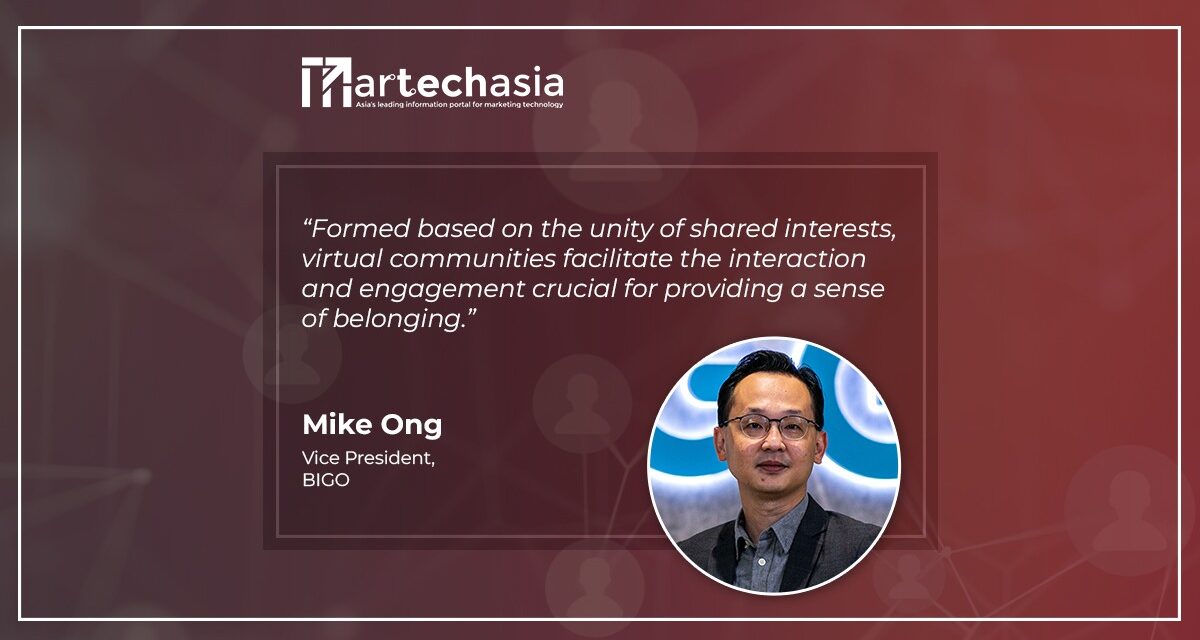For social media platforms to ensure their longevity and relevance in this highly competitive space, they must think beyond simply attracting individual users.
The global proliferation of social media shows no sign of slowing as the past year saw a massive 227 million new social media users join the fray. A significant contributor to this accelerated growth is the wide variety of social media platforms now available, enabling users of all generations to freely switch apps according to their preferences.
For social media platforms to ensure their longevity and relevance in this highly competitive space, they must think beyond simply attracting individual users. Instead, they should invest in building sustainable virtual communities – ones that give people a reason to stay, engage, and grow.

The importance of virtual communities
Formed based on the unity of shared interests, virtual communities facilitate the interaction and engagement crucial for providing a sense of belonging. They can even help people foster deeper emotional connections in the absence of in-person meetings, which was especially important during the movement-restrictive COVID-19 pandemic.
Additionally, virtual communities provide a safe and open space for individuals in their self-creation journeys. This is especially so for marginalized groups or communities who are often overlooked. By helping users explore their passions transparently, communities surrounding niche interests can enable users to develop their identities and even actualise the prospect of a “second life”. Furthermore, as virtual communities are not physically bound to any geography, there is no restriction to accessing a larger audience, encouraging more diverse interactions.
Fostering the creation of virtual communities
Building virtual communities requires a deep understanding of user behaviours, as well as being agile in adapting to the preferences of target demographics. This helps ensure that users are constantly engaged with the platforms, building familiarity and recognition.
As such, platforms should be constantly exploring the market’s reaction to new content and features, and tailor it to their preferences. For instance, Generation Z users may welcome regular testing of new content as they have very varied interests. Meanwhile, e-commerce tools may be of more interest to elder generations who prioritise convenience and value, yet also have a higher purchasing power.
Technology can also be a game-changer for platforms in community-building. Detection algorithms, for example, can identify and group users based on common factors such as geographies, cultures, and search histories. Using this, social media platforms can recommend content or topics that are more likely to be of interest to the user. When complemented by features that promote interaction, such as comments, reactions and livestreaming, this can also further foster engagement and result in the natural creation of communities on the platform.
Popular community-building features today
Users engage online in various ways, which is why it is important for social media platforms to offer diverse forms of engagement for inclusiveness and to encourage participation. Some common features that promote community-building that are also trending among the younger generation include:
Forums
One of the earliest community-building features on the internet, text forums have now evolved into thread-style discussions. Reddit, one of the most popular discussion platforms in the world, has noted that the success of its platform is rooted in the ability to share information honestly and transparently, which fosters closer bonds and creates solidarity among its users – known as ‘redditors’ – during times of uncertainty. Similarly, Bigo Live’s “Community” feature enables users to share their thoughts on and discuss relevant topics based on the interest groups they belong in.
Messaging
Instant messaging has been around the internet since the mid-1990s and is now an embedded feature in many online services. It can also be a successful standalone engagement platform, especially if integrated with other communication features such as streaming and voice chats. Discord, a popular chat platform, is an excellent example of this – it has helped gaming communities enjoy instant and streamlined communication during, around and about gaming.
Livestreams
The real-time nature of livestreaming enables unfiltered communication that enhances authentic self-expression, as well as fostering a greater sense of intimacy via immediate two-way interaction. In many ways, it blurs the divide between digital and in-person interactions. Features like virtual gifts and multi-guest rooms also enhance participation and facilitate the rise of creator economies, further creating a sense of community. At Bigo Live, we have seen many communities spring up around particular content creators or specific niche topics.
Adapting to the rising convergence between the physical and virtual worlds
With futuristic concepts such as the metaverse gaining traction, there might be fundamental digital shifts in how we work, learn, socialise, entertain, travel and engage daily. As the physical and digital worlds continue on their convergence, virtual communities can act as a prelude to the borderless social landscape promised by the future – if social media platforms invest in building them today.
Not only would these platforms be providing a more enriching user experience, but they would also be paving the way for users to adapt to new forms of interaction and to redefine what it means to belong to a community. Ultimately, it all ties back to nurturing satisfying and progressive social engagement, which is fundamental for the success of any social media platform.
As a leading livestreaming platform, we at Bigo Live look forward to continuing our contribution to building better communities, and we are excited to help bring people together across generations and geographies.


















